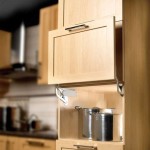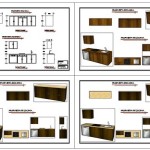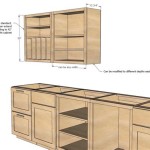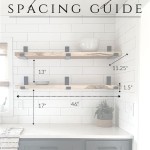The Essential Guide to Molding for Under Kitchen Cabinets: Enhancing Aesthetics and Functionality
Molding for under kitchen cabinets is an often-overlooked design element that can significantly enhance the look and feel of your kitchen. Whether you're updating an existing kitchen or embarking on a new construction project, understanding the different types of molding and their installation techniques will help you make informed decisions that elevate your kitchen's style and functionality.
Molding beneath kitchen cabinets serves a dual purpose: it adds aesthetic appeal while also hiding unsightly gaps or plumbing fixtures. It can also create a seamless transition between the cabinets and the floor, giving your kitchen a more polished and finished appearance.
Types of Molding
There are several different types of molding available for under kitchen cabinets, each with its unique characteristics:
- Base Molding: This is the most common type of molding, installed along the bottom edge of the cabinets to conceal the gap between the cabinets and the floor.
- Crown Molding: This ornamental molding is typically placed along the top edge of the cabinets, creating a decorative transition to the ceiling.
- Light Rail Molding: This molding is installed above the cabinets to hide under cabinet lighting and provide a decorative element.
- Valance Molding: This molding is similar to light rail molding but is used to conceal the valance, a decorative element that covers the space between the cabinets and the ceiling.
Choosing the Right Molding
When choosing the molding for under kitchen cabinets, consider the following factors:
- Cabinet Style: Match the molding style to the existing or desired cabinet design. Traditional cabinets pair well with ornate crown molding, while modern cabinets may complement simpler base molding.
- Material: Molding is typically made from wood, MDF (medium-density fiberboard), or plastic. Wood molding is durable and elegant but requires more maintenance. MDF is cost-effective and easy to paint, while plastic molding is moisture-resistant and suitable for areas prone to water exposure.
- Height and Profile: The height and profile of the molding should complement the size and style of your cabinets. Larger cabinets can support more elaborate molding, while smaller cabinets may benefit from a simpler profile.
Installation Techniques
Installing molding under kitchen cabinets is a relatively straightforward task that can be completed with basic tools and materials:
- Measure and cut the molding to fit the desired length.
- Apply adhesive or construction nails to the back of the molding.
- Align the molding with the cabinet and press firmly into place.
- Secure the molding with finish nails or screws.
- Fill any nail holes or gaps with wood filler and paint or stain the molding to match the cabinets.
By following these steps and considering the essential aspects outlined in this guide, you can enhance the aesthetics and functionality of your kitchen with molding designed specifically for under kitchen cabinets.

Kitchen Cabinet Molding Cabinets Trim Trendy Backsplash

Adding Moldings To Your Kitchen Cabinets Remodelando La Casa

Decorative Details For Cabinets Accessories Kitchen Cliqstudios Cabinet Molding Trim Crown

3 Ways To Enhance Your Kitchen With Crown Molding

10 Types Of Kitchen Cabinet Molding For Your Home

Moldings Finish And Trim With Gary Striegler Part 14

3 Types Of Kitchen Cabinet Moldings Wood Factory

Kitchen Cabinet Trims Mog Bathroom Remodeling Marietta

Decorative Molding Timberlake Cabinetry

Traditional Light Rail Moulding Decora Cabinetry
Related Posts








